Moira Butterfield's Blog, page 22
March 16, 2020
Bedtime Stories in Broad Daylight
As a picture book writer and a storyteller, I take my books into libraries, festival events and bookshops to tell stories. I don’t read from the book – I tell them like a story – sometimes with songs, but also with actions, sounds and interactivity.
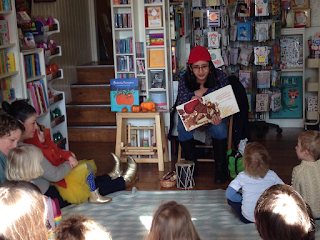 Tales on Moon Lane with
Tales on Moon Lane with
Farmer Falgu Goes on a Trip, illustrated by Kanika Nair
Often the audience is a group of children ranging from 3 years to 7 years old. Often these events are in the middle of the day either right after breakfast (so the children have eaten) or after lunch (so the children have eaten). That time between naps and bedtime, the time between playtime and nappy change time. Understandably the children are not sleepy – they are raring to go and want to join in the fun. This is fantastic because if I tell the story of Pattan’s Pumpkin, then the story is an adventure. It’s exciting to join Pattan as he journeys down the mountain.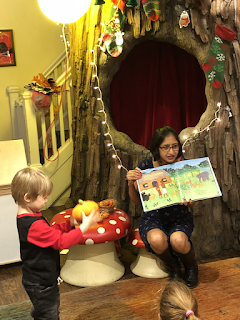
But I’ve also written three beautifully illustrated bedtime stories. Stories shared by parents with their children with a comforting refrain. These are stories that are meant to be read when the child closes it eyes and is ready to be comforted and lulled into the safety of dreams.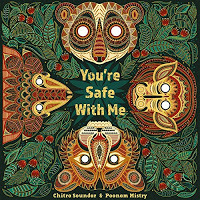 Illustrated by Poonam Mistry,
Illustrated by Poonam Mistry,
it was shortlisted for the Kate Greenaway Medal 2019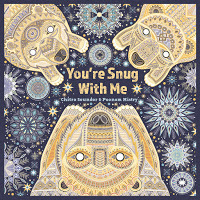 Illustrated by Poonam Mistry,
Illustrated by Poonam Mistry,
it has been longlisted for the Kate Greenaway Medal 2020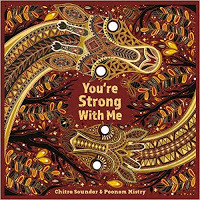 Illustrated by Poonam Mistry,
Illustrated by Poonam Mistry,
all 3 published by Lantana Publishing
How do I tell these three stories in the middle of a busy library or a festival in broad daylight when the children are definitely not sleepy? I had to adapt the performances to suit the venue, the timing and the level of interactivity the event organisers demand.1. The setting: I discuss the setting, the fauna and the flora of the region in these books. The first one is set in an Indian forest, the second one in the Arctic and the third one in the grasslands. I talk about these habitats, and who lives there, what grows there. Children love to contribute to these discussions. The first book You're Safe with Me has a number of unfamiliar animals and birds that fascinate children.2. Discuss the issues and the science discussed in each of the books before telling the story – the first one handles fear and water cycles, the second one about climate change and third one is about mutualism. I discuss these concepts with children – relate it to their own real life and then when I do tell the story, they can make the connections.3. Adding songs that are more interactive and noisy than bedtime ones. For example, to perform You’re Safe With Me, I’ve adapted “The wheels on the bus” to my own story – they know the rhyme, I teach them the words and soon we are singing together.4. We chant together – the refrain which is also the title appears at the end of each section of the story and the children join in. They are waiting for it and they love to say it with me.5. Activities - I always carry colouring sheets, puzzles, word searches all related to the book – so just in case older children have accompanied their younger siblings or a child is less happy to sit down and listen, they start working on the activities. Colouring has definitely opened the door older children to join in with the story.

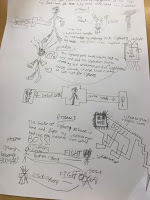 6.
Workshop
– Sometimes the group of children who have bought tickets to my event are all over seven. Armed with a sleepy bedtime book I suddenly face an eager crowd that is worried about being bored. When that happens I turn the session into a writing workshop. I go through the story with them and then we get on with the writing of their own stories or non-fiction projects.
6.
Workshop
– Sometimes the group of children who have bought tickets to my event are all over seven. Armed with a sleepy bedtime book I suddenly face an eager crowd that is worried about being bored. When that happens I turn the session into a writing workshop. I go through the story with them and then we get on with the writing of their own stories or non-fiction projects.
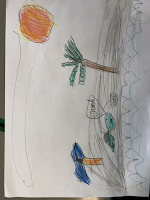 I’ve also blogged about taking picture books into older classrooms here, if you are interested in doing writing workshops with your picture books.
I’ve also blogged about taking picture books into older classrooms here, if you are interested in doing writing workshops with your picture books.
 Chitra Soundar is an internationally published author of over 40 books for children. Her picture books have been translated into German, French, Japanese and Thai and have been included in the White Ravens Catalogue and IBBY International Books of USA.
Chitra Soundar is an internationally published author of over 40 books for children. Her picture books have been translated into German, French, Japanese and Thai and have been included in the White Ravens Catalogue and IBBY International Books of USA.
You're Safe with Me was shortlisted for the Kate Greenaway Medal 2019 for Poonam Mistry's illustrations and their second book together You're Snug with Me has been longlisted for the Kate Greenaway Medal in 2020. Find out more at www.chitrasoundar.com and follow her on twitter at @csoundar.
 Tales on Moon Lane with
Tales on Moon Lane with Farmer Falgu Goes on a Trip, illustrated by Kanika Nair
Often the audience is a group of children ranging from 3 years to 7 years old. Often these events are in the middle of the day either right after breakfast (so the children have eaten) or after lunch (so the children have eaten). That time between naps and bedtime, the time between playtime and nappy change time. Understandably the children are not sleepy – they are raring to go and want to join in the fun. This is fantastic because if I tell the story of Pattan’s Pumpkin, then the story is an adventure. It’s exciting to join Pattan as he journeys down the mountain.

But I’ve also written three beautifully illustrated bedtime stories. Stories shared by parents with their children with a comforting refrain. These are stories that are meant to be read when the child closes it eyes and is ready to be comforted and lulled into the safety of dreams.
 Illustrated by Poonam Mistry,
Illustrated by Poonam Mistry, it was shortlisted for the Kate Greenaway Medal 2019
 Illustrated by Poonam Mistry,
Illustrated by Poonam Mistry, it has been longlisted for the Kate Greenaway Medal 2020
 Illustrated by Poonam Mistry,
Illustrated by Poonam Mistry, all 3 published by Lantana Publishing
How do I tell these three stories in the middle of a busy library or a festival in broad daylight when the children are definitely not sleepy? I had to adapt the performances to suit the venue, the timing and the level of interactivity the event organisers demand.1. The setting: I discuss the setting, the fauna and the flora of the region in these books. The first one is set in an Indian forest, the second one in the Arctic and the third one in the grasslands. I talk about these habitats, and who lives there, what grows there. Children love to contribute to these discussions. The first book You're Safe with Me has a number of unfamiliar animals and birds that fascinate children.2. Discuss the issues and the science discussed in each of the books before telling the story – the first one handles fear and water cycles, the second one about climate change and third one is about mutualism. I discuss these concepts with children – relate it to their own real life and then when I do tell the story, they can make the connections.3. Adding songs that are more interactive and noisy than bedtime ones. For example, to perform You’re Safe With Me, I’ve adapted “The wheels on the bus” to my own story – they know the rhyme, I teach them the words and soon we are singing together.4. We chant together – the refrain which is also the title appears at the end of each section of the story and the children join in. They are waiting for it and they love to say it with me.5. Activities - I always carry colouring sheets, puzzles, word searches all related to the book – so just in case older children have accompanied their younger siblings or a child is less happy to sit down and listen, they start working on the activities. Colouring has definitely opened the door older children to join in with the story.

 6.
Workshop
– Sometimes the group of children who have bought tickets to my event are all over seven. Armed with a sleepy bedtime book I suddenly face an eager crowd that is worried about being bored. When that happens I turn the session into a writing workshop. I go through the story with them and then we get on with the writing of their own stories or non-fiction projects.
6.
Workshop
– Sometimes the group of children who have bought tickets to my event are all over seven. Armed with a sleepy bedtime book I suddenly face an eager crowd that is worried about being bored. When that happens I turn the session into a writing workshop. I go through the story with them and then we get on with the writing of their own stories or non-fiction projects.
 I’ve also blogged about taking picture books into older classrooms here, if you are interested in doing writing workshops with your picture books.
I’ve also blogged about taking picture books into older classrooms here, if you are interested in doing writing workshops with your picture books. Chitra Soundar is an internationally published author of over 40 books for children. Her picture books have been translated into German, French, Japanese and Thai and have been included in the White Ravens Catalogue and IBBY International Books of USA.
Chitra Soundar is an internationally published author of over 40 books for children. Her picture books have been translated into German, French, Japanese and Thai and have been included in the White Ravens Catalogue and IBBY International Books of USA. You're Safe with Me was shortlisted for the Kate Greenaway Medal 2019 for Poonam Mistry's illustrations and their second book together You're Snug with Me has been longlisted for the Kate Greenaway Medal in 2020. Find out more at www.chitrasoundar.com and follow her on twitter at @csoundar.
Published on March 16, 2020 00:00
March 9, 2020
Ideas by Patricia Cleveland-Peck
During the course of 2020, we are inviting author Patricia Cleveland-Peck to share her thoughts on many aspects of being a picture book author.
On joining Sassies I was very pleased to discover Picture Book Den and have since spent many hours reading the valuable resource of past blogs. One of the first I read was about that most frequently asked question - “Where do you get your ideas?” It is one we all get a bit tired of answering, perhaps because as Stephen King put it, ‘we know we don’t know.’
Memories, dreams, poems, paintings, a snatch of conversation: it seems any of these can be a catalyst but it got me wondering if I could discern any sort of pattern in my own case. I noticed that several times it has been quite a tiny experience which provided the spark - although it developed and changed its clothes many times before reaching the page. In the case of You Can’t Take and Elephant on the Bus, it was just a sentence which I heard my granddaughter, aged about 3, say to my late husband. “Grandpops, you can’t take and elephant on the bus.” She said this in all seriousness but the result was the first of my silly Elephant picture books so brilliantly illustrated by David Tazzyman.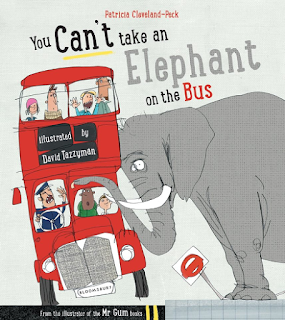
It can also simply be a glimpse of something. The Queen’s Spaghetti came about when I cooked some spaghetti. I like cooking but having been married to a restaurateur and chef who always did all things culinary faster and better than me, I lacked experience and was a poor judge of quantities. Anyway on this occasion I cooked far, far too much of the pasta and as my husband, (like King Jim in the book) ‘didn’t like waste,’ I felt compelled to get rid of as much of the evidence as possible before he got home. This was something relatively easy on a smallholding – and it took just a glimpse of our ducks waddling up the path with their beaks tied up with spaghetti for the picture book potential to strike me. Another real event which resulted in a book occurred when our ginger cat, Joseph, kept going missing for a few days. This went on for quite a while and as he always came back in his own time we didn’t worry. One day however, a neighbour was visiting. “What are you doing with my cat Billy?” he asked, quite indignantly when he saw Joseph curled up asleep on one of our chairs. “No, no that’s our cat Joseph, we’ve had him for years,” we replied.It turned out that the neighbour had taken him in as a stray - and so Joseph/Billy had been enjoying a double life with extra food and cuddles. Thus was born Freckle and Clyde, the story of two children who, unknowingly shared, or were owned, by the same cat.
Another real event which resulted in a book occurred when our ginger cat, Joseph, kept going missing for a few days. This went on for quite a while and as he always came back in his own time we didn’t worry. One day however, a neighbour was visiting. “What are you doing with my cat Billy?” he asked, quite indignantly when he saw Joseph curled up asleep on one of our chairs. “No, no that’s our cat Joseph, we’ve had him for years,” we replied.It turned out that the neighbour had taken him in as a stray - and so Joseph/Billy had been enjoying a double life with extra food and cuddles. Thus was born Freckle and Clyde, the story of two children who, unknowingly shared, or were owned, by the same cat.
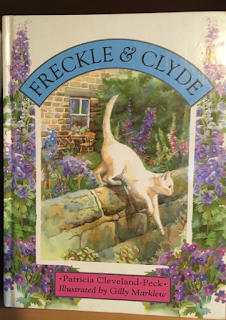 Another even more bizarre happening which set me off was in fact something (mis) overheard. A while back my husband came home one day and told me that he had visited a woman who had told him, “not to go in the front room as there was an escaped German in there.” I knew my husband was interested in WW2 and immediately imagined a scenario in which this woman had kept a prisoner hostage since the war. Crazy, I know, especially as it turned out to be was an escaped gerbil she was talking about - but the seed was sown and the incarceration of a German prisoner for 30 years in a county house is the subject of my as yet unpublished story for older readers, The Monkey Room.
Another even more bizarre happening which set me off was in fact something (mis) overheard. A while back my husband came home one day and told me that he had visited a woman who had told him, “not to go in the front room as there was an escaped German in there.” I knew my husband was interested in WW2 and immediately imagined a scenario in which this woman had kept a prisoner hostage since the war. Crazy, I know, especially as it turned out to be was an escaped gerbil she was talking about - but the seed was sown and the incarceration of a German prisoner for 30 years in a county house is the subject of my as yet unpublished story for older readers, The Monkey Room.
So probably we writers get our ideas wherever we can, the trick is recognising and snatching them as they flit past.
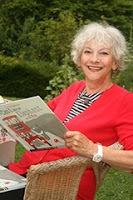 My name is Patricia Cleveland-Peck and I write picture book texts. When my own children were little I wrote about 14 children’s books but gradually drifted into writing for adults as they grew up. It was when I had a granddaughter that I returned to the wonderful world of picture books. It was her remark, “You can’t take an elephant on the Bus,” which resulted in my book of the same name. For more details visit my website www.patriciaclevelandpeck.com.
My name is Patricia Cleveland-Peck and I write picture book texts. When my own children were little I wrote about 14 children’s books but gradually drifted into writing for adults as they grew up. It was when I had a granddaughter that I returned to the wonderful world of picture books. It was her remark, “You can’t take an elephant on the Bus,” which resulted in my book of the same name. For more details visit my website www.patriciaclevelandpeck.com.
On joining Sassies I was very pleased to discover Picture Book Den and have since spent many hours reading the valuable resource of past blogs. One of the first I read was about that most frequently asked question - “Where do you get your ideas?” It is one we all get a bit tired of answering, perhaps because as Stephen King put it, ‘we know we don’t know.’
Memories, dreams, poems, paintings, a snatch of conversation: it seems any of these can be a catalyst but it got me wondering if I could discern any sort of pattern in my own case. I noticed that several times it has been quite a tiny experience which provided the spark - although it developed and changed its clothes many times before reaching the page. In the case of You Can’t Take and Elephant on the Bus, it was just a sentence which I heard my granddaughter, aged about 3, say to my late husband. “Grandpops, you can’t take and elephant on the bus.” She said this in all seriousness but the result was the first of my silly Elephant picture books so brilliantly illustrated by David Tazzyman.

It can also simply be a glimpse of something. The Queen’s Spaghetti came about when I cooked some spaghetti. I like cooking but having been married to a restaurateur and chef who always did all things culinary faster and better than me, I lacked experience and was a poor judge of quantities. Anyway on this occasion I cooked far, far too much of the pasta and as my husband, (like King Jim in the book) ‘didn’t like waste,’ I felt compelled to get rid of as much of the evidence as possible before he got home. This was something relatively easy on a smallholding – and it took just a glimpse of our ducks waddling up the path with their beaks tied up with spaghetti for the picture book potential to strike me.
 Another real event which resulted in a book occurred when our ginger cat, Joseph, kept going missing for a few days. This went on for quite a while and as he always came back in his own time we didn’t worry. One day however, a neighbour was visiting. “What are you doing with my cat Billy?” he asked, quite indignantly when he saw Joseph curled up asleep on one of our chairs. “No, no that’s our cat Joseph, we’ve had him for years,” we replied.It turned out that the neighbour had taken him in as a stray - and so Joseph/Billy had been enjoying a double life with extra food and cuddles. Thus was born Freckle and Clyde, the story of two children who, unknowingly shared, or were owned, by the same cat.
Another real event which resulted in a book occurred when our ginger cat, Joseph, kept going missing for a few days. This went on for quite a while and as he always came back in his own time we didn’t worry. One day however, a neighbour was visiting. “What are you doing with my cat Billy?” he asked, quite indignantly when he saw Joseph curled up asleep on one of our chairs. “No, no that’s our cat Joseph, we’ve had him for years,” we replied.It turned out that the neighbour had taken him in as a stray - and so Joseph/Billy had been enjoying a double life with extra food and cuddles. Thus was born Freckle and Clyde, the story of two children who, unknowingly shared, or were owned, by the same cat.
 Another even more bizarre happening which set me off was in fact something (mis) overheard. A while back my husband came home one day and told me that he had visited a woman who had told him, “not to go in the front room as there was an escaped German in there.” I knew my husband was interested in WW2 and immediately imagined a scenario in which this woman had kept a prisoner hostage since the war. Crazy, I know, especially as it turned out to be was an escaped gerbil she was talking about - but the seed was sown and the incarceration of a German prisoner for 30 years in a county house is the subject of my as yet unpublished story for older readers, The Monkey Room.
Another even more bizarre happening which set me off was in fact something (mis) overheard. A while back my husband came home one day and told me that he had visited a woman who had told him, “not to go in the front room as there was an escaped German in there.” I knew my husband was interested in WW2 and immediately imagined a scenario in which this woman had kept a prisoner hostage since the war. Crazy, I know, especially as it turned out to be was an escaped gerbil she was talking about - but the seed was sown and the incarceration of a German prisoner for 30 years in a county house is the subject of my as yet unpublished story for older readers, The Monkey Room.So probably we writers get our ideas wherever we can, the trick is recognising and snatching them as they flit past.
 My name is Patricia Cleveland-Peck and I write picture book texts. When my own children were little I wrote about 14 children’s books but gradually drifted into writing for adults as they grew up. It was when I had a granddaughter that I returned to the wonderful world of picture books. It was her remark, “You can’t take an elephant on the Bus,” which resulted in my book of the same name. For more details visit my website www.patriciaclevelandpeck.com.
My name is Patricia Cleveland-Peck and I write picture book texts. When my own children were little I wrote about 14 children’s books but gradually drifted into writing for adults as they grew up. It was when I had a granddaughter that I returned to the wonderful world of picture books. It was her remark, “You can’t take an elephant on the Bus,” which resulted in my book of the same name. For more details visit my website www.patriciaclevelandpeck.com.
Published on March 09, 2020 00:00
March 1, 2020
To Be or Not to Be an Author? • by Natascha Biebow
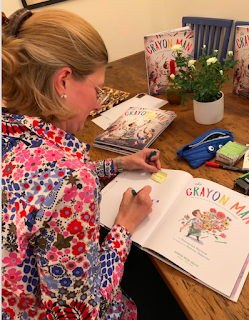
Children are curious – they ask me
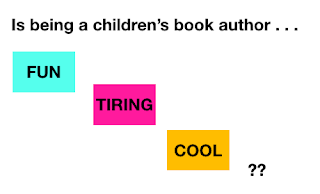 This question has got me thinking about this vocation
This question has got me thinking about this vocation that is being an author:

What's not to like? You get to do something you LOVE
Published on March 01, 2020 20:00
February 23, 2020
How To Not Draw Things (with Mini Grey)
 For someone who is allegedly supposed to be drawing things, I spend an awful lot of time trying to avoid committing my pencil to the page. In today’s post I’m going to gaze deep into the abyss of procrastination and pull out a few ideas for fooling yourself into drawing and making things. Being creative – it’s a risky business. It may go wrong. You may toil on something all day then realise it just doesn’t work. Time may be lost. You may have to look your idea in the face and then hurl it out of the window. Better to not start at all and avoid all the anguish…
For someone who is allegedly supposed to be drawing things, I spend an awful lot of time trying to avoid committing my pencil to the page. In today’s post I’m going to gaze deep into the abyss of procrastination and pull out a few ideas for fooling yourself into drawing and making things. Being creative – it’s a risky business. It may go wrong. You may toil on something all day then realise it just doesn’t work. Time may be lost. You may have to look your idea in the face and then hurl it out of the window. Better to not start at all and avoid all the anguish…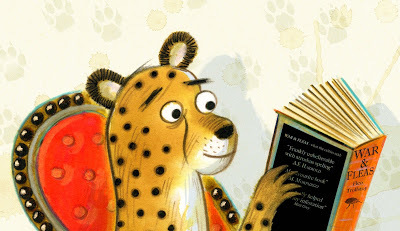
Why your drawing is nearly always a disappointment
When you start a drawing of an idea there’s usually a picture in your mind that you are aiming for. But your imagination has a limitless budget; it has the world’s best cast and locations and atmospheric lighting and spell-binding special effects. So as you gaze upon your drawn effort you measure it up against the gleaming image in your brain and you find it wanting and inadequate.

But there are so many ways to be wrong and just one elusive way of being right, when you’re chasing a particular picture. Comparing can be toxic beause comparing seems to mostly involve noticing what’s wrong..
The imaginary picture you are competing with – the feeling of it – is impossible to achieve. Disappointment is inevitable.
BUT….try wandering away from your picture and forgetting about it a bit. Then, a little later, take it by surprise. Stumble upon it unawares. Suddenly, it won’t seem so bad. You’ll have forgotten that picture in your mind, and rather than failing to be as good as that, your drawing might be surprisingly saying what you wanted it to say.
The Power of Tiny What do you do if you don’t know how to do something? You make a model. You do a test, an experiment. You draw it as a tiny thumbnail. On the scrappiest possible paper. Recently I have been making pictures for a book of poems by AF Harrold. There are about 128 pages of them (I’m still not sure exactly how many.) I've never done anything with so many pages before. I had print-outs of the words but there was no way I could manage to draw rough ideas at the real size.
The only answer was to massively miniaturise the whole thing so I could see it all at a glance. So I made little 13cm wide pages and then got out the scribbling materials and the pritt stick and scissors. And the good thing is, working teeny is fast. And if a teeny page goes wrong, you can doodle another version in a few seconds. And because it’s teeny you are forced to be simple. So if I'm feeling daunted, drawing teeny can really help.
 Here are my scribbled on thumbnails for the poetry book.
Here are my scribbled on thumbnails for the poetry book.Safety in numbers – how multiples can help
So you’ve managed to be making a picture but now you splat Quink on it or your cat comes in from the muddy garden and tap-dances on it or everything goes the wrong colour… Now, (in snakes and ladders terms) do you have to slither down to the starting line again? Or do you have a SPARE (evil?) twin coming along at the same time?
Nowadays I quite often print a couple of copies of the drawing for a picture I'm going to do so I can try things out on the evil twin and use the good twin. Or the other way round.
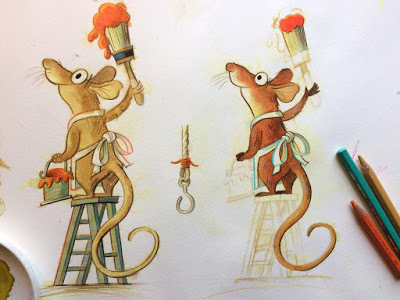 Here messing about with painter-decorator mice.
Here messing about with painter-decorator mice.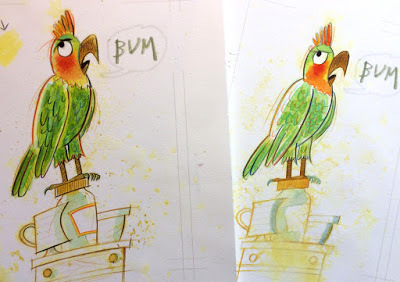 Two goes at a swearing parrot.
Two goes at a swearing parrot. The one that got used.
The one that got used.Rules and recipes can set you free TOO MUCH CHOICE – paralyses you and stops you getting started. So do we need to take away options? Having a Style: is a way of cutting down your options, so there’s less time deciding how to do things. It’s a bit like wearing a uniform to work– you don’t have to spend any time deciding what to wear. Limitations can set you free – by giving you less decisions to have to make.
 Here I am working out my Recipe for the Miniature AF Harrolds that are going to be wandering through a book. The blank paper is a terrifying thing, because the possibilities and choices are infinite – so – you’ve got to help yourself out of the quicksand of infinite possibilities and….
Here I am working out my Recipe for the Miniature AF Harrolds that are going to be wandering through a book. The blank paper is a terrifying thing, because the possibilities and choices are infinite – so – you’ve got to help yourself out of the quicksand of infinite possibilities and….Throw yourself a bone (something to get started with)
Anything can be a start.A shape. A stain. A smudge. Using old scraps of used paper.
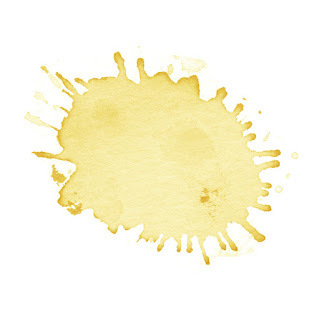 Here's a stain I made earlier.
Here's a stain I made earlier.
 And a few more stains.
And a few more stains.
 Let's see what they want to turn into...
Let's see what they want to turn into...Things that are changeable are good, which is why cutting things out and moving them around is my favourite way out of being stuck. Tracing Paper is a very useful secret weapon.
 Character drawings with tracing paper & assorted bady parts.
Character drawings with tracing paper & assorted bady parts.It could be possible to fool yourself into doing your drawing by accident….
How to go running: put on your running kit and before you know it, you’ll be going out of the door…
And anyway, the thing you don’t draw can be the main event
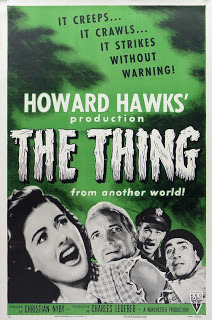
The power of things you don’t draw is huge – because our reading accomplice, Your & My Imagination, supplies all the extras. The horror film is most scary when you haven’t properly seen the Thing. Take advantage of the full budget power of the imagination, and hide your Thing.
 Here I am hiding William Shakespeare in a production of his last play, The Tempest.
Here I am hiding William Shakespeare in a production of his last play, The Tempest. Here I am avoiding drawing a nasty rabbit and using the power of the shadow.
Here I am avoiding drawing a nasty rabbit and using the power of the shadow. Here I am attempting to hide a bear in a packet of cornflakes....
Here I am attempting to hide a bear in a packet of cornflakes.... ...and here I am hiding a cat in some soup.Words, pictures & our storytelling brains are our accomplices
...and here I am hiding a cat in some soup.Words, pictures & our storytelling brains are our accomplices In the picture book world, we’re using pictures and words, so don’t forget that words can help you. You don’t have to draw it well, if a label can help explain what it is. Stealing is an option, also known as borrowing. Find the thing that’s a bit like the thing you’re after. Something old, something new, something shoplifted. Random things are useful. Given a set of random images, we sequence them automatically into some sort of bizarre narrative, we can’t help constructing stories.
 Here are some random objects if you'd like to borrow a few.
Here are some random objects if you'd like to borrow a few.Édouard Manet’s Illusion of Effortlessness and the Iceberg of Hard Work

In his last years Édouard Manet wrote adorable letters decorated with beautifully dashed off watercolour sketches of delightful things – peaches and cats and ankles and watering cans and gardens and the lovely snail shown above. But he dashed them off on thin paper, and I think this may be key.

In the letter above there's a charming liquidly drawn happy cat.But have a look at this letter here:

There's a really similar almost matching cat appearing in Manet's assortment of decorations.And it is possible to trace the motifs in his letters back to little studies in his sketchbooks.
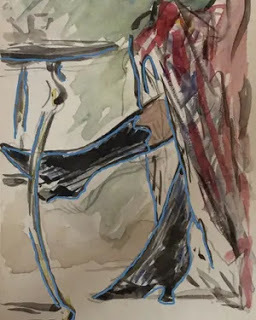
Above there's a sketchbook study of some nice ankles. And you can spot them adorning the letter below:
 The sketch and the letter exactly match in size. So Manet would work out his picture in advance - in fact have a repertoir of motifs to draw from again and again - and then trace it into his letter straight off with a brush – so it looked like it fell effortlessly, sponaneously – onto the page – with no struggle or mishap. And maybe Manet wanted the receivers of his fresh and beautiful letters to feel they'd happened immediately and spontaneously - but what he was creating was an illusion.
The sketch and the letter exactly match in size. So Manet would work out his picture in advance - in fact have a repertoir of motifs to draw from again and again - and then trace it into his letter straight off with a brush – so it looked like it fell effortlessly, sponaneously – onto the page – with no struggle or mishap. And maybe Manet wanted the receivers of his fresh and beautiful letters to feel they'd happened immediately and spontaneously - but what he was creating was an illusion.When you see a published picture book, you are looking at an iceberg, and lots of it you cannot see. With the iceberg 80% is invisible and lurking below the water’s surface. Hiding there are all the other things it has been and the work that was wrong, the many versions in drawers that didn’t work, the ideas that had to be cut or abandoned, the rethinking and sweat and struggle. Just as in a magic trick, we don’t see all the practice that went into making it look effortless. So sometimes it seems obvious to assume it was easy and effortless to make - which means that if you're struggling, that is unusual and it is because you are not somehow talented enough. But you are being sold an illusion.
Struggler, you are not alone. What’s a drawing for anyway? Drawing is a way of finding out, a way of discovering: you draw to explore. The process of exploring might be more important than the thing you make. So as school visit time rolls around it could be good to model to children the surprisingness and unexpectedness of the process of making a drawing.
What if there was…A World where Nothing Went Wrong
Things going wrong is an excellent opportunity to find things out. In a world where nothing went wrong there'd be no progress and no evolution. So every mishap, every slip-up, every disaster is an opportunity to find something out.
In the words of Roman Krznaric: "Everything’s an offer" – accept the offer and see where it takes you.
There are more insights on the journey of a drawing and an illustrator's odyssey with their pencil and rubber in this excellent post from Garry Parsons.
And lastly, here is your seven step guide to:
 Today: How to Not Draw an octopus.
Today: How to Not Draw an octopus.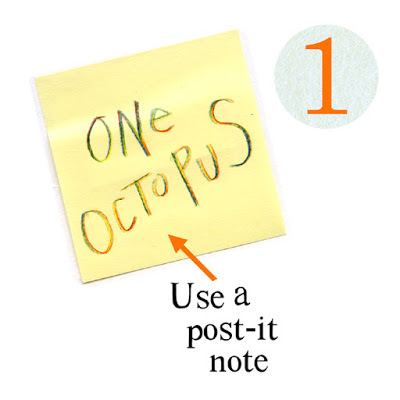 1. Try using a placeholder label for the thing you are not drawing, a post-it note is good.
1. Try using a placeholder label for the thing you are not drawing, a post-it note is good.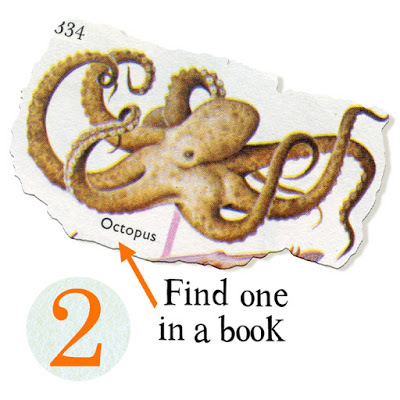 2. Go hunting - there may be one you can use in a book that can do the job.
2. Go hunting - there may be one you can use in a book that can do the job.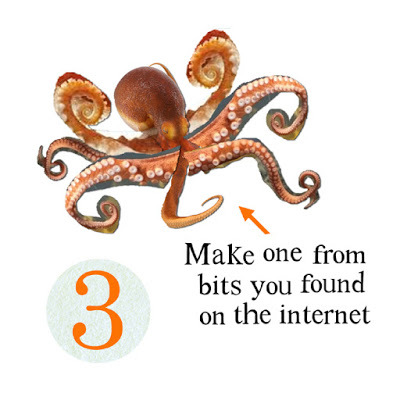 3. Collage is always a nice option - get out the scissors and glue.
3. Collage is always a nice option - get out the scissors and glue. 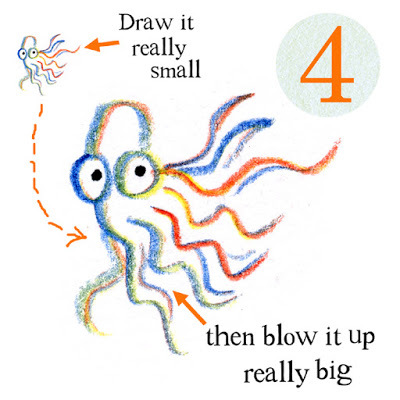 4. It's amazing how really small drawings look brilliant really big.
4. It's amazing how really small drawings look brilliant really big. 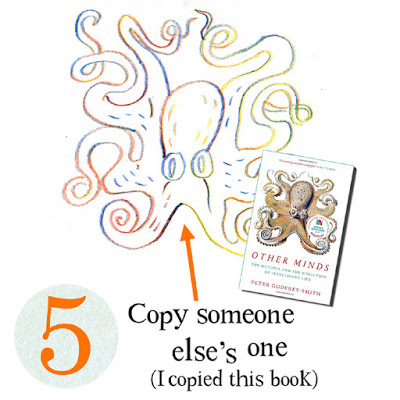 5. Copying is never wrong.
5. Copying is never wrong.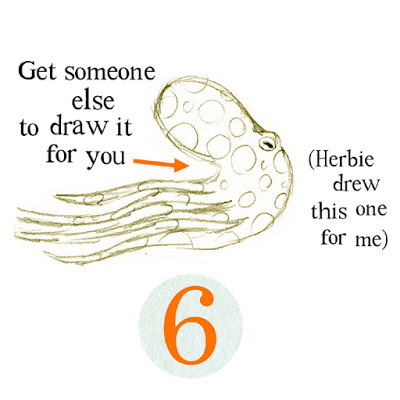 6. Begging or blackmailing your son to do it for you may be a bit wrong, but it's possible.
6. Begging or blackmailing your son to do it for you may be a bit wrong, but it's possible. 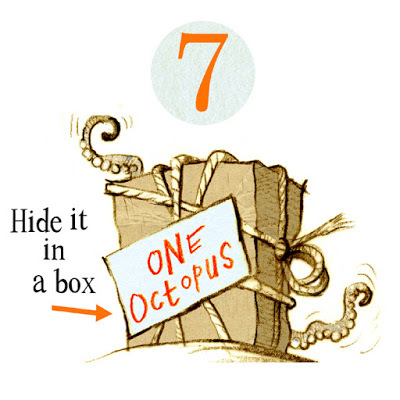 7. Hide the thing you want to Not Draw inside something you like drawing - I very much like drawing boxes.
7. Hide the thing you want to Not Draw inside something you like drawing - I very much like drawing boxes.And that's it! Do you have a favourite way to not draw things or get yourself unstuck? Do let me know!
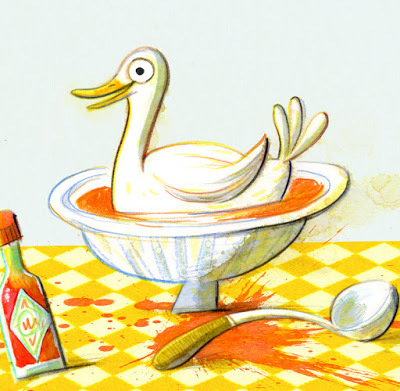
Quite a few images in this post are from artwork for Not Entirely Useful Advice by AF Harrold & Mini Grey, due to be published by Bloomsbury.Mini's latest publication is the pictures for Money Go Round, by Roger McGough, published by Walker Books.

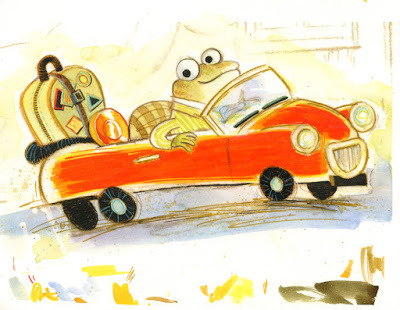

Published on February 23, 2020 22:00
February 16, 2020
Top Picture Book Picks for New Parents
Top Picture Book Picks for New Parents.
As some of you know, in September last year, we welcomed our baby boy, Benjamin, into the world (so if I've been quieter than usual on social media, that's the reason!) What a whirlwind it's been! But I have absolutely loved getting to know our son and discovering the steep learning curve that is becoming a parent.
I've also loved starting to share books with Benji. We read every day, whether it's short 'touch and feel' books, longer picture books, board books, musical books or lift the flap books. I've relied on books to fill the time, to calm Benji down if he's a bit grizzly and also for playing and talking.
Now that our babies are 3 months old, I thought it might be interesting to ask the parents in my NCT group if they are also reading with their little ones and to find out what their top picture book/board book picks are.
Benjamin chooses:
'Touch and Feel'-The Gruffalo and the ever-popular 'That's not my....' series. (We were given the 'That's not my Snowman/Reindeer/Santa' set for Christmas but also have Kitten and Llama). It's fun to explore the different textures and the bold illustrations are perfect for this age.
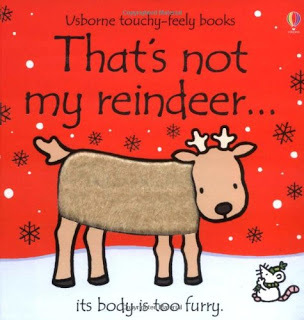 I choose:
I choose:
'Mr Brown can Moo. Can you?' by Dr Seuss- I love the rhythm of the text and enjoy making the noises and making Benji smile. Another firm favourite is 'Books Always Everywhere' by Jane Blatt and Sarah Massini-the illustrations are gorgeous and I truly believe books should always be everywhere!
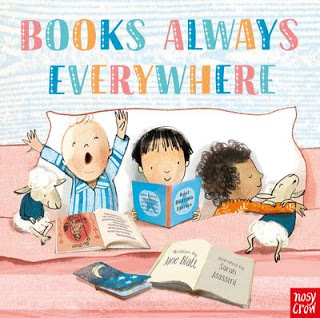
Mum of Freddie chooses: 'Tyrone the Horrible' by Hans Willhelm. She says 'Apparently it was my favourite as a child, but it's got a great story line about a smaller dinosaur-Roland who is being bullied by a bigger one-Tyrone. It's got a lovely message. Although it's not very much about turning the other cheek in the end and Roland gets his own back! The pages are really bright and colourful and there is a surprise that seems to grab Freddie's attention!
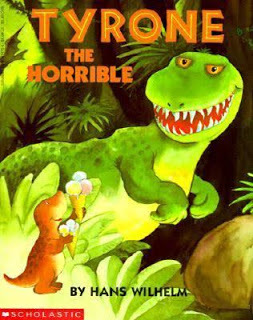
Mum of Ralph chooses: Any of the Dick Bruna books. She says 'Partly I like them because I love Dick Bruna's simple illustrations and stories with Miffy and Boris bear I remember from my own childhood. Ralph likes them because I think the pictures are clear, simple and bold and he is able to focus on them. They are short enough that he can tolerate reading until the end of the book and the books themselves are a bit smaller so he can grab them when they are closed. Other books we enjoy are by Carol Thompson- we have 'Wind', 'Rain', 'Sun' and 'Snow'. It's nice to read about the weather and make the weather sounds while reading them. The illustrations are full of movement and fun too so he likes those!
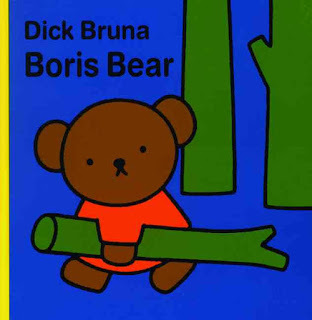
Mum of Maisie chooses: The Birthday Invitation by Lucy Rowland and Laura Hughes. *Disclaimer* I have to say here that I gifted all of the babies in our NCT group one of my own picture books after they were born but it's very nice to hear that Maisie is enjoying hers!
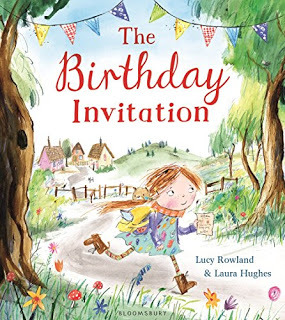
Mum of Sienna says: 'Like some of the others, Sienna enjoys the 'That's not my...' series. We also have some books that have sounds and music too, such as Musical 'We're going on a bear Hunt' by Michael Rosen and Helen Oxenbury- these are fun for a bit of variety. Sienna's dad's favourites are 'The Very Hungry Caterpillar' by Eric Carle and 'Ten Little Dinosaurs' by Mike Brownlow and Simon Rickerty.
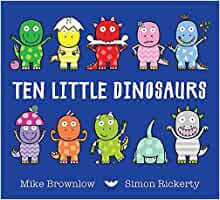
Mum of Holly says: 'We haven't really done much reading with Holly other than looking at the black and white pattern books'. Holly's mum is bilingual and describes the patterns to Holly in both English and in Chinese, which is wonderful! Lucky Holly being exposed to two languages from such an early age! Babies enjoy strong contrasting colours and patterns as these are the first things that they can see clearly.
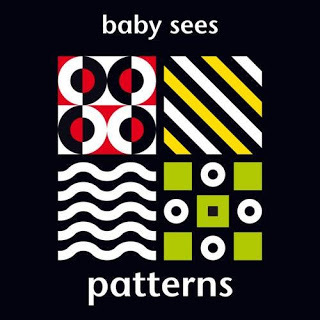
Mum of Joseph says: 'We're bit behind on the books and reading front. Joseph rarely wants to sit still and look at a book at the moment. He is enjoying soft material books and loves grabbing them, turning the pages and trying to eat them!'
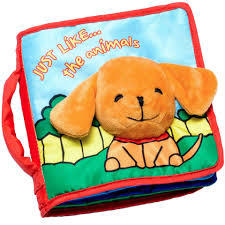
It's been lovely hearing about which books our little ones are enjoying- whether it's books to support their visual skills, their musical skills, their language skills or their coordination skills, or whether it's those books that are...well... just good enough to eat!!
I'd love to hear what are/were some of your babies' favourites?
As some of you know, in September last year, we welcomed our baby boy, Benjamin, into the world (so if I've been quieter than usual on social media, that's the reason!) What a whirlwind it's been! But I have absolutely loved getting to know our son and discovering the steep learning curve that is becoming a parent.
I've also loved starting to share books with Benji. We read every day, whether it's short 'touch and feel' books, longer picture books, board books, musical books or lift the flap books. I've relied on books to fill the time, to calm Benji down if he's a bit grizzly and also for playing and talking.
Now that our babies are 3 months old, I thought it might be interesting to ask the parents in my NCT group if they are also reading with their little ones and to find out what their top picture book/board book picks are.
Benjamin chooses:
'Touch and Feel'-The Gruffalo and the ever-popular 'That's not my....' series. (We were given the 'That's not my Snowman/Reindeer/Santa' set for Christmas but also have Kitten and Llama). It's fun to explore the different textures and the bold illustrations are perfect for this age.
 I choose:
I choose:'Mr Brown can Moo. Can you?' by Dr Seuss- I love the rhythm of the text and enjoy making the noises and making Benji smile. Another firm favourite is 'Books Always Everywhere' by Jane Blatt and Sarah Massini-the illustrations are gorgeous and I truly believe books should always be everywhere!

Mum of Freddie chooses: 'Tyrone the Horrible' by Hans Willhelm. She says 'Apparently it was my favourite as a child, but it's got a great story line about a smaller dinosaur-Roland who is being bullied by a bigger one-Tyrone. It's got a lovely message. Although it's not very much about turning the other cheek in the end and Roland gets his own back! The pages are really bright and colourful and there is a surprise that seems to grab Freddie's attention!

Mum of Ralph chooses: Any of the Dick Bruna books. She says 'Partly I like them because I love Dick Bruna's simple illustrations and stories with Miffy and Boris bear I remember from my own childhood. Ralph likes them because I think the pictures are clear, simple and bold and he is able to focus on them. They are short enough that he can tolerate reading until the end of the book and the books themselves are a bit smaller so he can grab them when they are closed. Other books we enjoy are by Carol Thompson- we have 'Wind', 'Rain', 'Sun' and 'Snow'. It's nice to read about the weather and make the weather sounds while reading them. The illustrations are full of movement and fun too so he likes those!

Mum of Maisie chooses: The Birthday Invitation by Lucy Rowland and Laura Hughes. *Disclaimer* I have to say here that I gifted all of the babies in our NCT group one of my own picture books after they were born but it's very nice to hear that Maisie is enjoying hers!

Mum of Sienna says: 'Like some of the others, Sienna enjoys the 'That's not my...' series. We also have some books that have sounds and music too, such as Musical 'We're going on a bear Hunt' by Michael Rosen and Helen Oxenbury- these are fun for a bit of variety. Sienna's dad's favourites are 'The Very Hungry Caterpillar' by Eric Carle and 'Ten Little Dinosaurs' by Mike Brownlow and Simon Rickerty.

Mum of Holly says: 'We haven't really done much reading with Holly other than looking at the black and white pattern books'. Holly's mum is bilingual and describes the patterns to Holly in both English and in Chinese, which is wonderful! Lucky Holly being exposed to two languages from such an early age! Babies enjoy strong contrasting colours and patterns as these are the first things that they can see clearly.

Mum of Joseph says: 'We're bit behind on the books and reading front. Joseph rarely wants to sit still and look at a book at the moment. He is enjoying soft material books and loves grabbing them, turning the pages and trying to eat them!'

It's been lovely hearing about which books our little ones are enjoying- whether it's books to support their visual skills, their musical skills, their language skills or their coordination skills, or whether it's those books that are...well... just good enough to eat!!
I'd love to hear what are/were some of your babies' favourites?
Published on February 16, 2020 23:00
February 9, 2020
Three picture books that make you fizz with ideas - Jane Clarke
This time of year, I’m a frequent visitor to schools. I love to help enthuse and inspire the 4-11 year olds, and help them to come up with their own ideas for stories and poems. I often show them a picture book as a springboard.
Here are my top three picture books for making a class of kids (and me) fizz with ideas. If you don’t know them, take a look, I’m sure they will inspire you, too:
Tell me a Dragon by Jackie Morris (Frances Lincoln Children's Books)

A gorgeous, poetic book. What would your dragon be, and how would you look after it?
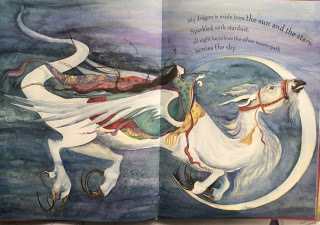
Even the hatching-egg end papers are inspirational
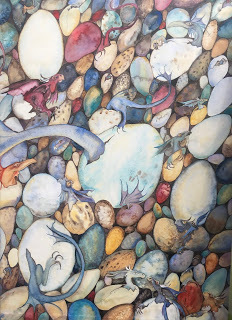
I hadn’t realised before I looked it up today that Pie Corbett has created some great teachers notes on using this book, so instead of blathering on about what I do, I will refer you to an expert:Tell me a Dragon teacher's notes by Pie Corbett
Things that are the most in the world by Judi Barrett, illustrated by John Nickle (Atheneum Books for Young Readers)
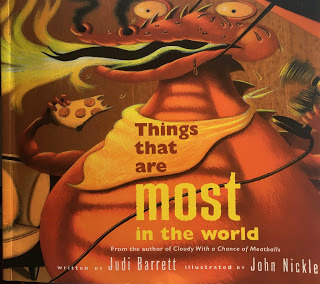
This is crazy, silly, surreal - and lots of fun!
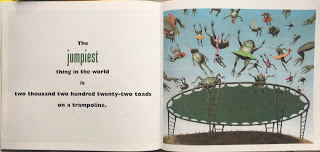
Get the youngest kids to try it with colours and the older ones with emotions/feelings (happiest, saddest, most grumpy/loving/jealous/angry etc). Try it yourself with different sorts of weather, atmosphere, settings, food, textures, movements.
My non-fiction choice isUneversaurus by Professor Potts (David Fickling Books)
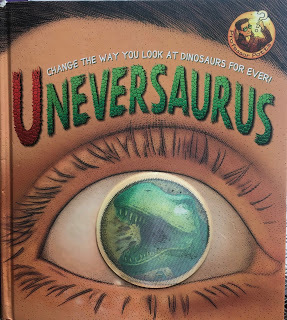
Discover a new dinosaur and bring it to life. Keep it ‘real’ or go silly by mixing dinosaurs with other creatures (like an Octo-saur or a Dog-o-don) emotions, (Happysaurus, Grumpysaurus etc) what they eat (e.g. Sausagesaurus, Book-o-saur).
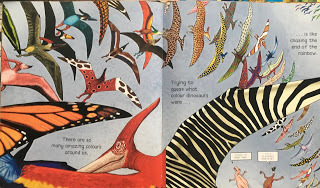
If you’re hoping to inspire the small person in your life - a special mention for the You Choose books by Picture Book Den’s very own Pippa Goodhart, illustrated by Nick Sharratt. They are packed with inspirational ideas for kids. The only reason that the first You Choose is not in my top 3 is that it’s harder to share with a class, whereas all the others have illustrations that are big, bold and easy-to-see-from-a-distance.
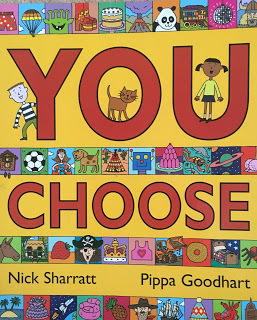
I’d love to hear about other books that make you fizz with ideas!
Jane’s thrilled to be able to let you know that she's just agreed a deal with Walker Books for her next picture book - and is delighted to have these 3 new editions of picture books out in Feb 2020: a paperback edition of Leap frog, illustrated by Btitta Teckentrup and board book editions of Neon Leon, also illustrated by Britta Teckentrup, and Old Macdonald's Things That Go, illustrated by Migy Blanco.
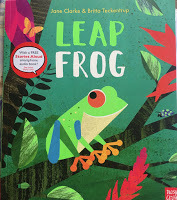
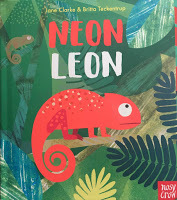
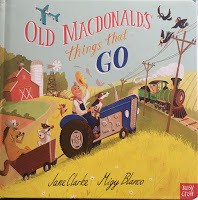
Here are my top three picture books for making a class of kids (and me) fizz with ideas. If you don’t know them, take a look, I’m sure they will inspire you, too:
Tell me a Dragon by Jackie Morris (Frances Lincoln Children's Books)

A gorgeous, poetic book. What would your dragon be, and how would you look after it?

Even the hatching-egg end papers are inspirational

I hadn’t realised before I looked it up today that Pie Corbett has created some great teachers notes on using this book, so instead of blathering on about what I do, I will refer you to an expert:Tell me a Dragon teacher's notes by Pie Corbett
Things that are the most in the world by Judi Barrett, illustrated by John Nickle (Atheneum Books for Young Readers)

This is crazy, silly, surreal - and lots of fun!

Get the youngest kids to try it with colours and the older ones with emotions/feelings (happiest, saddest, most grumpy/loving/jealous/angry etc). Try it yourself with different sorts of weather, atmosphere, settings, food, textures, movements.
My non-fiction choice isUneversaurus by Professor Potts (David Fickling Books)

Discover a new dinosaur and bring it to life. Keep it ‘real’ or go silly by mixing dinosaurs with other creatures (like an Octo-saur or a Dog-o-don) emotions, (Happysaurus, Grumpysaurus etc) what they eat (e.g. Sausagesaurus, Book-o-saur).

If you’re hoping to inspire the small person in your life - a special mention for the You Choose books by Picture Book Den’s very own Pippa Goodhart, illustrated by Nick Sharratt. They are packed with inspirational ideas for kids. The only reason that the first You Choose is not in my top 3 is that it’s harder to share with a class, whereas all the others have illustrations that are big, bold and easy-to-see-from-a-distance.

I’d love to hear about other books that make you fizz with ideas!
Jane’s thrilled to be able to let you know that she's just agreed a deal with Walker Books for her next picture book - and is delighted to have these 3 new editions of picture books out in Feb 2020: a paperback edition of Leap frog, illustrated by Btitta Teckentrup and board book editions of Neon Leon, also illustrated by Britta Teckentrup, and Old Macdonald's Things That Go, illustrated by Migy Blanco.



Published on February 09, 2020 22:00
February 2, 2020
Doctor Doodle-little - How to converse with animals through drawing (with a little help from a rescue dog) - Garry Parsons

It's not often we give ourselves space to examine what we do day to day in any great detail. I've recently been working on three picture books where the characters are all animals and because of a busy timetable I've been jumping between these books at different stages of their development. This has resulted in a lot of intensive drawing.

Drawing out the characters and working on the first roughs is always a favourite part of the process for me. The combined sketching and researching is always enjoyable and inevitably turns up some unexpected surprises. And, since “How do you come up with the characters?" is a question I’m often asked, I’ve been making mental notes about how the process reveals itself, which is not something I usually pay that much attention to. In considering this question, one of the challenges of coming up with an animal character is finding how to imbue it with human characteristics but maintaining its animal form and nature.

The first of the three animal books I mentioned I’ve been working on is about a llama who lives in a rather quiet and regimented community but who has a passion for dancing which he secretly expresses at night.
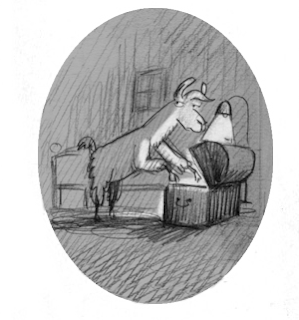
My starting point for a new picture book is to gather suitable images, in this case llamas, and create a board on Pinterest that I can fill with resource material. This becomes like a mood board for the whole book that I can add images and return to for reference as I go. But drawing animals as surrogates for complex human lives can be tricky for an illustrator. Physically they might have to hold things - books, cups or maps - and if they have hooves or feathers this can be a challenge. They might have to wipe a tear from a cheek, lie on a sun lounger, climb up a ship’s rigging, ride a bike or remove a splinter from a dog's paw, and, if your character is a horse with clumsy hooves or a tyrannosaurus rex with a giant head, thumping great body with tiny arms and only two digits on each ‘hand,’ the physical logistics can be thorny.
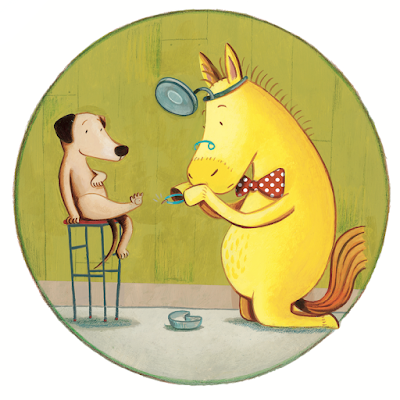
In the llama’s case he had perform to dance moves. He was required to twist, stamp his feet and keep in time to the techno beat! Not that easy with four legs and a neck that’s as long as your body, and my job as illustrator is to make this look as convincing and as normal as possible, to give life to the text as naturally as possible.

Personally, I love this challenge. Sometimes the character just appears before me as I’m drawing, but most other times it involves a lot of rubbing out. Drawing and re-drawing, rubbing out completely and then more drawing. Often a relatively simple line might take a few goes to get it ‘right'.
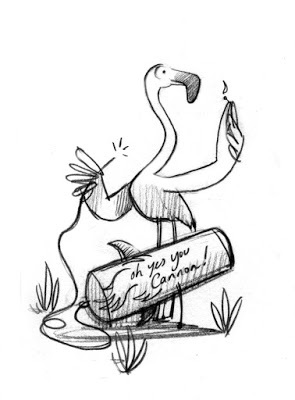
It still fascinates me what ‘right’ actually is or how I even determine I've reached it but all I know is that I have to keep going until I get there, until it looks ‘right’ and, more importantly, feels right. One way of knowing I’ve achieved this is if it makes me laugh. I distincly remember being in the cinema as a child watching The Muppet Movie. Having only ever seen the TV show of the Muppets where their felt bodies are mostly obscured from the waist down to hide the puppeteers, in the movie you see Kermit riding a bicycle, legs and all, singing along with no visible signs of strings or puppeteers. This had me in tears of laughter for most of the movie and, I admit, periodically since then!
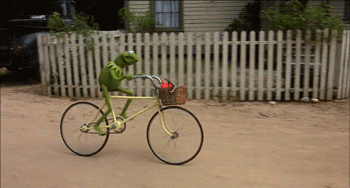
When I feel I get a character drawing ‘right’, it somehow resonates with that image of Kermit on a bike within me and I know I’ve got something right. Psychiatrist!
When I visit schools my assembly presentation consists of me asking the pupils what things they might need in order to be an illustrator - the first being a pencil. Sounds basic, I know, but then I tell them that my pencil has a secret sidekick and not only that but my pencil is in LOVE! ...Groan! Yuk!
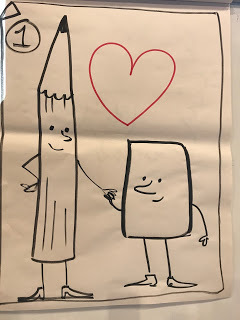
We usually have to go through a myriad of different possiblilties as to who or what this sidekick love interest is until someone yells, a rubber! What is difficult to get across is the idea that it takes time and a lot of re-drawing to get it down. All they see is a fully formed character sketch that has taken a lot of skill but been executed in an instant. It never comes out perfect, I tell them when it’s their turn to draw, it’s all about feeling when it’s right for you. After a day of character drawing, which has included plenty of drawing and erasing, I might only be left with two or three drawings that are ‘right’, and all the effort of achieving this is only apparent in the diminished size of the rubber and the debris surrounding it.
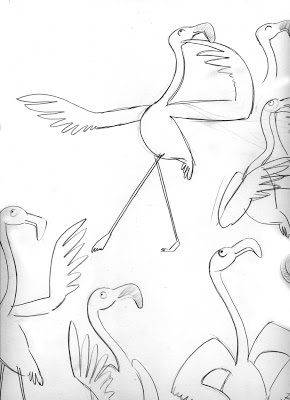
One of the other books I’m working on is about a flamingo. He is concerned with his looks. These sketches are still at the earliest stages, but once I felt I was happy with his general appearance as a flamingo I then needed to make him express his inner desire for marvelousness. Combining him, with his awkward long legs (as you know, birds legs often bend at the knee in the opposite direction to ours, as is the case for flamingos which is another challenge to anthropomorphise) and his long neck and wings into fashion poses I’d gathered onto my Pinterest board had me laughing out loud.

This is usually the time a friend who works in the city calls me on the phone distraught from a heavy board meeting exclaiming the pressures of work life and asks me how I’m getting on? Oh fine I say, I’m drawing a Kookaburra on a sun lounger drinking a margarita.

Facial expression is everything and this can also take an amount of drawing and re-drawing too. I can spend twenty minutes positioning and repositioning a dot in an eye to get the feel I’m after, but then, if I'm lucky, it sometimes works first time. The third book I mentioned I'm working on follows a whole bunch of birds on a poolside holiday. Birds lying on inflatables, wearing rubber rings, drinking cocktails and wearing sunglasses. Plenty of scope for unnatural fowl positions, funny expressions and awkward limbs.
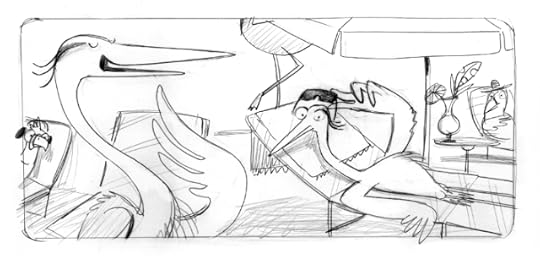
Dogs are great for studying expressions and maybe a lifetime of living with them has had an influence on how I draw emotion in animals' characters. Having recently lost a dog with expressive features (Olive was a grand 17 years old) and now being the owner of a new rescue dog, Lily, I can already see everything I might need for characterisation in her face. She’s does a particularly good sorrowful look, great for visualising the problem moment in a picture book story.
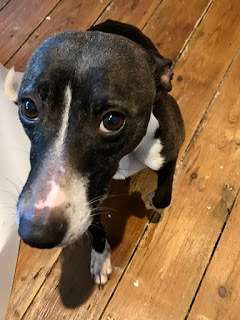
Which brings me to Doctor Dolittle, originally a story by Hugh Lofting about a respected physician and bachelor who learns the secret to speaking to animals from his parrot, Polynesia and which is currently having another turn at the cinema. After seeing the film with my kids I felt a little bit like the doctor myself, conversing with the animals but via a pencil and rubber instead of a parrot, with the help of a dog from the rescue centre.
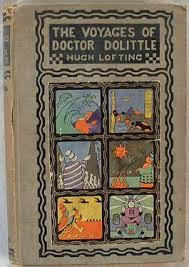
***
Garry Parsons has illustrated many picture books from wonderful authors. The Llama Glamarama by Simon James Green publishes this June from Scholastic. The image of the horse removing a splinter from the dog's paw is from "Dr Hoof" by Diana Kimpton, also published by Scholastic.Follow Garry on twitter @icandrawdinos
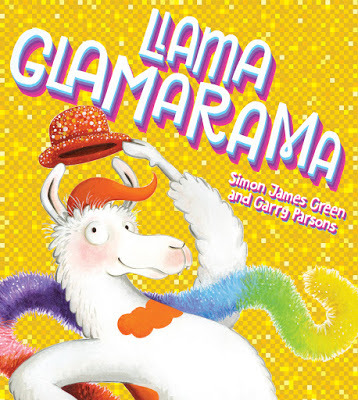
Published on February 02, 2020 12:38
January 27, 2020
Imposter Syndrome - Gareth P Jones
This is my first blog for Picture Book Den. I was asked to get involved by the illustrator of my two picture books, Garry Parsons. Having accepted, I instantly felt a pang of anxiety. Even though I have had 40 children’s books published so far, only two of them are picture books.
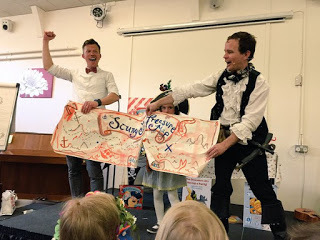
I am very proud of both of these books and I’m grateful to have books to read, talk about and sell when I visit schools. I love Garry’s illustrations and I have discovered lots of fun things to do around them in classes. Visiting Reception and Year One is always fun and having a good excuse to talk about pirates and dinosaurs is perfect. Although, I have discovered that it is hard to distinguish a dinosaur ROOOOAR from a pirate AARRRR!
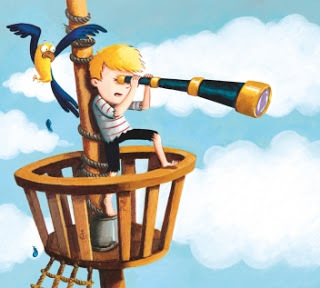
But I don’t feel like a natural born picture book writer. I have written more than just two. Lots in fact. If you were to scan through the Picture Book Ideas folder on my computer you would find a lot of unfinished, barely started, and “written but rejected” ideas.
Of course, I am not alone in suffering from Imposter Syndrome. A cursory Internet search on the subject suggests that many of us do, will or have suffered from Imposter Syndrome at some point. I found lots of advice about how to get over it, which made me realise that in my case, I don’t really mind feeling like an imposter. Before we get to the reason why I’m OK with it, I should clarify why I do feel this way.
Firstly, I don’t really consider myself a visual writer. I am not an illustrator and I don’t especially see images when I write. Some writers see images, which they describe with words. Others build words out of sentences. With me, I think it’s that I mostly hear voices, which I write down.

As I always say in schools, the most important aspect of a picture book is the pictures. (The clue is in the name.)
Whenever I write a picture book, I try my hardest to imagine how I might be able to use the pictures to move the story forward but, in truth, I am very much in the hands of the editor, designer and illustrator. In fact, there are aspects of both of my published picture books, that I only fully understood once the pictures had been added. In The Dinosaurs are Having a Party, I had no idea why the T-Rex started chasing the main character until I saw Garry’s rough artwork and there is a whole subplot with half a missing treasure map in Are You the Pirate Captain? that I had alluded to but not fully realised in my text.
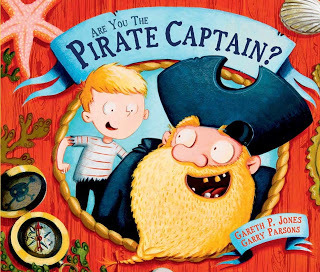
I also feel as clueless about whether anyone else will like each text enough to publish them. I never have any idea if my latest effort will actually get picked up. When I do manage to finish a book, I usually email it to my agent and her assistant who then let me know if they think it’s worth sending to publishers.
Sometimes they have comments. On other occasions they send them straight on as they are. I welcome comments but I do find that my picture books are especially delicate things. One light tap of an alteration and the rest of the text cracks and crumbles and I end up writing an entirely different story.
My next reason for feeling like an imposter is both true and hard to admit. But here goes… (deep breath)

A lot of the time I don’t enjoy writing pictures books. OK, so sometimes I do. And I really love picture books themselves. I also love having picture books and I am over the moon whenever I get a new contract but usually (especially if it’s rhyming) I find the process of writing the things absolutely soul-crushing. I remember Tracey Corderoy (who has written a lot of successful and excellent picture books) telling me she likes rhyming texts because it’s like solving a puzzle. I think my problem is that I was never really one for puzzles. I don’t care much for crosswords or sudokus or… even worse, Rubik’s cubes. I’m happy writing songs and raps because you can be flexible and you can rely on your own delivery but with the picture books the text has to stand on its own.
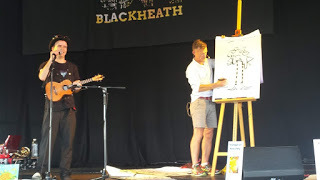
Another reason for disliking the process is that with a longer book, a bad day’s writing might result in a few badly written pages – maybe a rubbish chapter – but at least I know I’ll be able improve this. After a bad day writing a picture book, quite often my word count has gone down! Or I’ve ended up with half a sentence that, let’s face it, could be better.
Now, before you start thinking “this blog is a bit down beat” it is worth mentioning that Garry asked me because I’d told him that I have two picture books coming out next year (and a sequel to one of them the following year) all with Egmont.
Next year’s books came about as a result of much easier and more pleasant writing experiences. Perhaps this is because they both came about as the conversations of with my daughter. It may have helped that they are not rhyming texts. The first, The Lion on the Bus came about when a rendition of The Wheels on the Bus got silly. I sent it to my agent’s assistant (my agent was on maternity leave at the time). She had various concerns (too much going on visually, too much peril, not enough countries know the song… and so on). All very sensible things to bring up but, I responded saying I didn’t have anything else so please would she submit it anyway.

Thankfully she did. My new publisher’s enthusiasm for these books has been wonderful and I am very excited about the next stages in the process, (which I will probably blog about later this year).
And yet, I still feel like an imposter and, as I said at the beginning, I don’t actually mind feeling like that. I’m not looking for reassurance - at least not in this aspect of my career. I like the fact that I go into each picture book with the same wide-eyed innocence of the intended audience.
Lots of us do feel like imposters a lot of the time – especially when you are making your way in the world as a writer. And certainly, if you can find ways to tell yourself that you are the real thing, then that’s great. Do that. But maybe it’s also OK sometimes to admit that you are out of your comfort zone. Feeling like an imposter, for me, keeps me on my toes and ensures I work all the harder to write picture book texts that work.
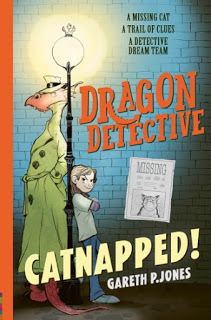
Gareth P Jones is the author of 40 books for children of all ages. Both his picture books are published by Andersen and illustrated by Garry Parsons. His next picture books will be published by Egmont in 2021. His next non picture book to be published is both his 41st and his 1st, as Dragon Detective: Catnapped is a republished version of his first ever book The Dragon Detective: The Case of the Missing Cats. The first in the series of four books is published by Stripes, February 2020. You can find out more on Gareth's website www.garethwrites.co.uk, listen to the Dragon Detective theme tune here or follow him on Twitter @jonesgarethp.
Published on January 27, 2020 01:09
Imposter Syndrome
This is my first blog for Picture Book Den. I was asked to get involved by the illustrator of my two picture books, Garry Parsons. Having accepted, I instantly felt a pang of anxiety. Even though I have had 40 children’s books published so far, only two of them are picture books.

I am very proud of both of these books and I’m grateful to have books to read, talk about and sell when I visit schools. I love Garry’s illustrations and I have discovered lots of fun things to do around them in classes. Visiting Reception and Year One is always fun and having a good excuse to talk about pirates and dinosaurs is perfect. Although, I have discovered that it is hard to distinguish a dinosaur ROOOOAR from a pirate AARRRR!
But I don’t feel like a natural born picture book writer. I have written more than just two. Lots in fact. If you were to scan through the Picture Book Ideas folder on my computer you would find a lot of unfinished, barely started, and “written but rejected” ideas.
Of course, I am not alone in suffering from Imposter Syndrome. A cursory Internet search on the subject suggests that many of us do, will or have suffered from Imposter Syndrome at some point. I found lots of advice about how to get over it, which made me realise that in my case, I don’t really mind feeling like an imposter. Before we get to the reason why I’m OK with it, I should clarify why I do feel this way.
Firstly, I don’t really consider myself a visual writer. I am not an illustrator and I don’t especially see images when I write. Some writers see images, which they describe with words. Others build words out of sentences. With me, I think it’s that I mostly hear voices, which I write down.
As I always say in schools, the most important aspect of a picture book is the pictures. (The clue is in the name.)
Whenever I write a picture book, I try my hardest to imagine how I might be able to use the pictures to move the story forward but, in truth, I am very much in the hands of the editor, designer and illustrator. In fact, there are aspects of both of my published picture books, that I only fully understood once the pictures had been added. In The Dinosaurs are Having a Party, I had no idea why the T-Rex started chasing the main character until I saw Garry’s rough artwork and there is a whole subplot with half a missing treasure map in Are You the Pirate Captain? that I had alluded to but not fully realised in my text.

I also feel as clueless about whether anyone else will like each text enough to publish them. I never have any idea if my latest effort will actually get picked up. When I do manage to finish a book, I usually email it to my agent and her assistant who then let me know if they think it’s worth sending to publishers.
Sometimes they have comments. On other occasions they send them straight on as they are. I welcome comments but I do find that my picture books are especially delicate things. One light tap of an alteration and the rest of the text cracks and crumbles and I end up writing an entirely different story.
My next reason for feeling like an imposter is both true and hard to admit. But here goes… (deep breath)

A lot of the time I don’t enjoy writing pictures books. OK, so sometimes I do. And I really love picture books themselves. I also love having picture books and I am over the moon whenever I get a new contract but usually (especially if it’s rhyming) I find the process of writing the things absolutely soul-crushing. I remember Tracey Corderoy (who has written a lot of successful and excellent picture books) telling me she likes rhyming texts because it’s like solving a puzzle. I think my problem is that I was never really one for puzzles. I don’t care much for crosswords or sudokus or… even worse, Rubik’s cubes. I’m happy writing songs and raps because you can be flexible and you can rely on your own delivery but with the picture books the text has to stand on its own.

Another reason for disliking the process is that with a longer book, a bad day’s writing might result in a few badly written pages – maybe a rubbish chapter – but at least I know I’ll be able improve this. After a bad day writing a picture book, quite often my word count has gone down! Or I’ve ended up with half a sentence that, let’s face it, could be better.
Now, before you start thinking “this blog is a bit down beat” it is worth mentioning that Garry asked me because I’d told him that I have two picture books coming out next year (and a sequel to one of them the following year) all with Egmont.
Next year’s books came about as a result of much easier and more pleasant writing experiences. Perhaps this is because they both came about as the conversations of with my daughter. It may have helped that they are not rhyming texts. The first, The Lion on the Bus came about when a rendition of The Wheels on the Bus got silly. I sent it to my agent’s assistant (my agent was on maternity leave at the time). She had various concerns (too much going on visually, too much peril, not enough countries know the song… and so on). All very sensible things to bring up but, I responded saying I didn’t have anything else so please would she submit it anyway.
Thankfully she did. My new publisher’s enthusiasm for these books has been wonderful and I am very excited about the next stages in the process, (which I will probably blog about later this year).
And yet, I still feel like an imposter and, as I said at the beginning, I don’t actually mind feeling like that. I’m not looking for reassurance - at least not in this aspect of my career. I like the fact that I go into each picture book with the same wide-eyed innocence of the intended audience.
Lots of us do feel like imposters a lot of the time – especially when you are making your way in the world as a writer. And certainly, if you can find ways to tell yourself that you are the real thing, then that’s great. Do that. But maybe it’s also OK sometimes to admit that you are out of your comfort zone. Feeling like an imposter, for me, keeps me on my toes and ensures I work all the harder to write picture book texts that work.
Published on January 27, 2020 01:09
January 19, 2020
FIVE MYTHS ABOUT PICTURE BOOK TITLES – UNPICKED! by Clare Helen Welsh
Since I began writing for children, I’ve heard several myths about titles.
The first was just prior to my debut book being published. I’d phoned a book shop to enquire about events and on hearing the name of the story alone, the seller proceeded to tell me that my book would never sell. Apparently, the title would put parents off buying it, and children off reading it, too!
MYTH NUMBER 1: DO NOT INCLUDE WORDS CHILDREN WON’T UNDERSTAND
The seller had, and still has, a very valid point. Your writing needs to be carefully matched to the age of your target readership. However, there is also an argument for using stories to explore and extend a child’s language and understanding of concepts. Indeed, it could even be the selling point. Baby 101’s series of books, including ‘Architecture for Babies’ and ‘Economics for Babies’ are good examples.
I'm acutually glad I stuck with my title. The picture book in question, ‘Aerodynamics of Biscuits,’ (illustrated by Sophia Touliatou) has been reprinted twice, turned into a theatre show and was runner up in the SCBWI Crystal Kite Award. There’s also a brand new edition coming in 2020! My advice would always be to make sure your writing is appropriate for your age of reader, but if there’s an opportunity for more complex vocabulary to be embedded and explored, don’t be put of including it.
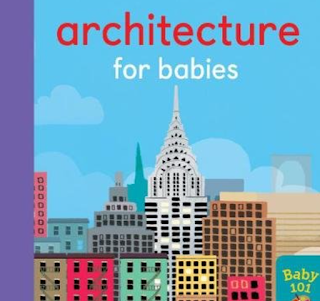
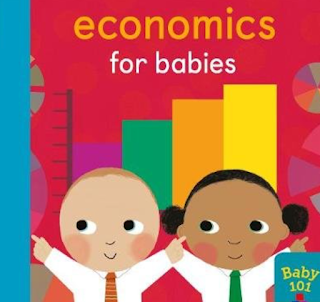
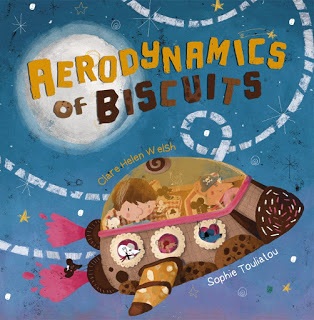
I thought it might be interesting to unpick some further myths about titles.
MYTH NUMBER 2: KEEP IT SHORT, SNAPPY AND SUCCINT
It’s generally advised that your titles should be short, snappy and succinct. Shorter titles leave more room on the cover for bigger font. Also, since picture books tend to sell on concept, a title can act as a mini pitch, communicating the concept to readers and buyers.
However, long titles can be memorable and distinctive. I love the title of Emma Perry’s debut picture book, illustrated by Sharon Davey. It’s a longer one, coming in at 8 words, but it communicates all the voice, character and concept I need to want to read it! (Unfortunately, I’ve got to wait until it publishes later in the year). Here’s another example that’s a whopping 10 words long!
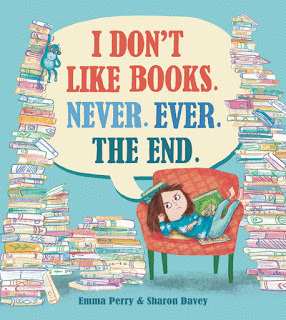
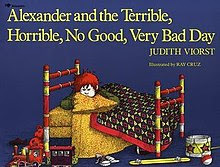
Of course, if your picture book manuscript has an overly long title, it couldsuggest that story is too vague or too complicated. Interestingly in Time’s list of 100 best-selling children’s books, the average length of the picture book titles was 3-4 words long.
MYTH NUMBER 3: DO NOT USE CHARACTER NAMES
Character names can be short, but the worry is that they give very little information about story. The risk is that you fail to hook your readers. If my story with Olivier Tallec, How Rude! had been named after the characters, Dot and Duck, you could argue it wouldn’t have been as strong a title. Titles are a promise to the reader; of humour, adventure or something else. So don’t miss out on the opportunity to sell your story. However, I do think it is possible to name books after characters, especially if the names give us a lot to go on. Take something like the Little Miss and Mr Men stories, for example. Similarly, titles like Supertato work because the characters have great names that are also the concept! If your character's name is the USP, why not use it?

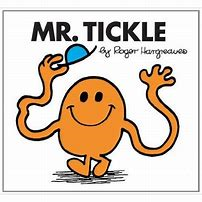
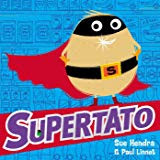
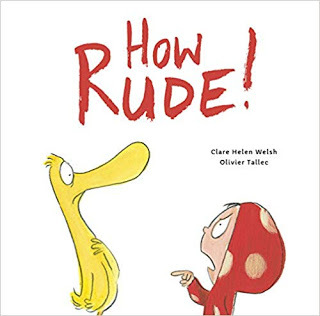
MYTH NUMBER 4: WORD PLAY, RHYME AND ALLITERATION DON'T TRANSLATE
It can be tricky to translate puns, rhymes and phrases from English into other languages, which could be an argument to avoid them in titles. However, that’s not to say it can’t be done.
Perhaps the title would work in enough English-speaking territories to make the project financially viable anyway? Or maybe the publisher would change the title to something else when any co-editions are translated?
Lucy Rowland talks more about this in her post for Picture Book Den, ‘What’s in a Title?’ Her story with Ben Mantle, ‘Little Red Reading Hood,’ relies on word play, but yet here it is translated into French!
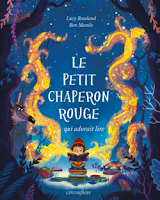
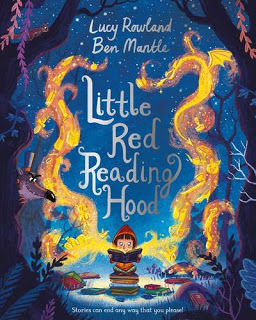
MYTH NUMBER 5: YOU CAN’T USE A TITLE THAT’S ALREADY BEEN TAKENI had to seek some advice on this one! But I guess the bottom line is that books with the same titles do exist. However, you’d probably want to be as original as possible. If you did use a title that had already been published, you’d certainly want the subject of the texts to be suitably different to avoid confusion. You wouldn’t want to duplicate a title if it had been published recently, either.It would also be important to check that the title wasn’t under copyright. Whilst I believe that, generally speaking, it isn’t possible to copyright a title since it is considered ‘a short slogan,’ some concepts and characters are copyrighted. You wouldn’t be able to include Rudolph, for example, without seeking the relevant permissions. More about this here.
I hope these thoughts are useful when naming your texts! Don’t underestimate the impact of a great title. It can be the difference between someone picking up your book …and not. I’ve heard that picture books can and have sold on titles alone, if they’re that good. Contrary to the popular idiom ‘Don’t judge a book by it’s cover’ – we do! The title will be one of your most important selling points, so spend time getting it right.
Now it’s your turn!
Which are your favourite picture book titles and why?
Clare is a children's writer and primary school teacher from Devon. She writes fiction and non-fiction picture book texts - sometimes funny and sometimes lyrical. Her first book was published in 2015, and she currently has books in development with Little Tiger Press, Quarto, Andersen, Nosy Crow and MacMillan. She also writes for the early readers for Collins Big Cat and Maverick. www.clarehelenwelsh.com @ClareHelenWelsh
The first was just prior to my debut book being published. I’d phoned a book shop to enquire about events and on hearing the name of the story alone, the seller proceeded to tell me that my book would never sell. Apparently, the title would put parents off buying it, and children off reading it, too!
MYTH NUMBER 1: DO NOT INCLUDE WORDS CHILDREN WON’T UNDERSTAND
The seller had, and still has, a very valid point. Your writing needs to be carefully matched to the age of your target readership. However, there is also an argument for using stories to explore and extend a child’s language and understanding of concepts. Indeed, it could even be the selling point. Baby 101’s series of books, including ‘Architecture for Babies’ and ‘Economics for Babies’ are good examples.
I'm acutually glad I stuck with my title. The picture book in question, ‘Aerodynamics of Biscuits,’ (illustrated by Sophia Touliatou) has been reprinted twice, turned into a theatre show and was runner up in the SCBWI Crystal Kite Award. There’s also a brand new edition coming in 2020! My advice would always be to make sure your writing is appropriate for your age of reader, but if there’s an opportunity for more complex vocabulary to be embedded and explored, don’t be put of including it.



I thought it might be interesting to unpick some further myths about titles.
MYTH NUMBER 2: KEEP IT SHORT, SNAPPY AND SUCCINT
It’s generally advised that your titles should be short, snappy and succinct. Shorter titles leave more room on the cover for bigger font. Also, since picture books tend to sell on concept, a title can act as a mini pitch, communicating the concept to readers and buyers.
However, long titles can be memorable and distinctive. I love the title of Emma Perry’s debut picture book, illustrated by Sharon Davey. It’s a longer one, coming in at 8 words, but it communicates all the voice, character and concept I need to want to read it! (Unfortunately, I’ve got to wait until it publishes later in the year). Here’s another example that’s a whopping 10 words long!


Of course, if your picture book manuscript has an overly long title, it couldsuggest that story is too vague or too complicated. Interestingly in Time’s list of 100 best-selling children’s books, the average length of the picture book titles was 3-4 words long.
MYTH NUMBER 3: DO NOT USE CHARACTER NAMES
Character names can be short, but the worry is that they give very little information about story. The risk is that you fail to hook your readers. If my story with Olivier Tallec, How Rude! had been named after the characters, Dot and Duck, you could argue it wouldn’t have been as strong a title. Titles are a promise to the reader; of humour, adventure or something else. So don’t miss out on the opportunity to sell your story. However, I do think it is possible to name books after characters, especially if the names give us a lot to go on. Take something like the Little Miss and Mr Men stories, for example. Similarly, titles like Supertato work because the characters have great names that are also the concept! If your character's name is the USP, why not use it?




MYTH NUMBER 4: WORD PLAY, RHYME AND ALLITERATION DON'T TRANSLATE
It can be tricky to translate puns, rhymes and phrases from English into other languages, which could be an argument to avoid them in titles. However, that’s not to say it can’t be done.
Perhaps the title would work in enough English-speaking territories to make the project financially viable anyway? Or maybe the publisher would change the title to something else when any co-editions are translated?
Lucy Rowland talks more about this in her post for Picture Book Den, ‘What’s in a Title?’ Her story with Ben Mantle, ‘Little Red Reading Hood,’ relies on word play, but yet here it is translated into French!


MYTH NUMBER 5: YOU CAN’T USE A TITLE THAT’S ALREADY BEEN TAKENI had to seek some advice on this one! But I guess the bottom line is that books with the same titles do exist. However, you’d probably want to be as original as possible. If you did use a title that had already been published, you’d certainly want the subject of the texts to be suitably different to avoid confusion. You wouldn’t want to duplicate a title if it had been published recently, either.It would also be important to check that the title wasn’t under copyright. Whilst I believe that, generally speaking, it isn’t possible to copyright a title since it is considered ‘a short slogan,’ some concepts and characters are copyrighted. You wouldn’t be able to include Rudolph, for example, without seeking the relevant permissions. More about this here.
I hope these thoughts are useful when naming your texts! Don’t underestimate the impact of a great title. It can be the difference between someone picking up your book …and not. I’ve heard that picture books can and have sold on titles alone, if they’re that good. Contrary to the popular idiom ‘Don’t judge a book by it’s cover’ – we do! The title will be one of your most important selling points, so spend time getting it right.
Now it’s your turn!
Which are your favourite picture book titles and why?
Clare is a children's writer and primary school teacher from Devon. She writes fiction and non-fiction picture book texts - sometimes funny and sometimes lyrical. Her first book was published in 2015, and she currently has books in development with Little Tiger Press, Quarto, Andersen, Nosy Crow and MacMillan. She also writes for the early readers for Collins Big Cat and Maverick. www.clarehelenwelsh.com @ClareHelenWelsh
Published on January 19, 2020 23:00



